Do Not Go My Love
-
Ships in 1 to 2 weeks
Details
Description
SKU: CF.CM9704
Composed by Richard Hageman. Arranged by Stephen Rotz. Jbc. 12 pages. Duration 2 minutes, 49 seconds. Carl Fischer Music #CM9704. Published by Carl Fischer Music (CF.CM9704).ISBN 9781491160114. UPC: 680160918713. Key: F# minor. English. Sir Rabindranath Tagore.
Richard Hageman (1881-1966) was a born into a family of musicians. As a pianist, he performed concerts from the age of six, and his mastery of this instrument is evident in the intricate accompaniment of this piece. After coming to America, (originally as accompanist to touring French singer Yvette Guilbert), he worked for a period of years as a conductor and pianist for the Metropolitan Opera in New York. It was during this period of time that he composed Do Not Go, My Love for solo voice, originally dedicating it to the operatic tenor, George Hamlin. Hageman's later career included work in Hollywood, first as a conductor, but later as a film-score composer and actor. Do Not Go, My Love is well-known among classical soloists, and many recordings exist. The SSA version of this American standard brings a vocal "classic" to younger singers who might not yet possess the dexterity to perform the original solo. Rabindranath Tagore (1861-1941) was an Indian polymath; someone who possesses deep knowledge and understanding of many disparate subjects. Tagore's expertise included the visual arts, music, and poetry. Tagore won the Nobel Prize in Literature in 1913, contributing to his receiving knighthood from King George V in 1915, but Tagore renounced his knighthood after the 1919 Jallianwala Bagh massacre. There are five Tagore museums in Bangladesh and three in India; at least three universities bear his name. Do Not Go, My Love is taken from The Gardener, a collection of poems translated from Bengali by Tagore and published in 1915. Number 34 in the collection, and taken by itself, the poem might be interpreted as someone watching over the deathbed of a lover or child; however, the larger narrative woven through The Gardener suggests a romantic relationship being clung to by the speaker. .
Richard Hageman (1881–1966) was a born into a family of musicians. As a pianist, he performed concerts from the age of six, and his mastery of this instrument is evident in the intricate accompaniment of this piece. After coming to America, (originally as accompanist to touring French singer Yvette Guilbert), he worked for a period of years as a conductor and pianist for the Metropolitan Opera in New York. It was during this period of time that he composed Do Not Go, My Love for solo voice, originally dedicating it to the operatic tenor, George Hamlin. Hageman’s later career included work in Hollywood, first as a conductor, but later as a film-score composer and actor. Do Not Go, My Love is well-known among classical soloists, and many recordings exist. The SSA version of this American standard brings a vocal “classic” to younger singers who might not yet possess the dexterity to perform the original solo.Rabindranath Tagore (1861–1941) was an Indian polymath; someone who possesses deep knowledge and understanding of many disparate subjects. Tagore’s expertise included the visual arts, music, and poetry. Tagore won the Nobel Prize in Literature in 1913, contributing to his receiving knighthood from King George V in 1915, but Tagore renounced his knighthood after the 1919 Jallianwala Bagh massacre. There are five Tagore museums in Bangladesh and three in India; at least three universities bear his name.Do Not Go, My Love is taken from The Gardener, a collection of poems translated from Bengali by Tagore and published in 1915. Number 34 in the collection, and taken by itself, the poem might be interpreted as someone watching over the deathbed of a lover or child; however, the larger narrative woven through The Gardener suggests a romantic relationship being clung to by the speaker. .
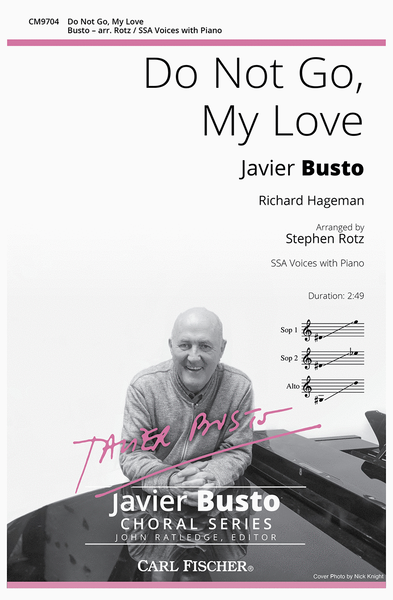
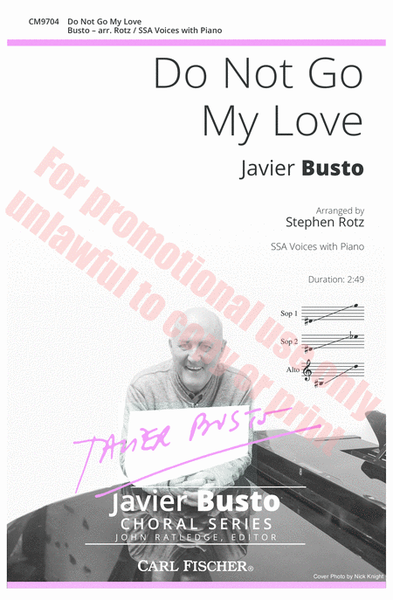
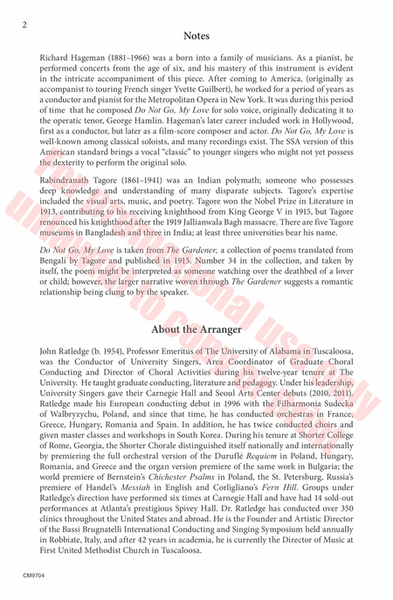
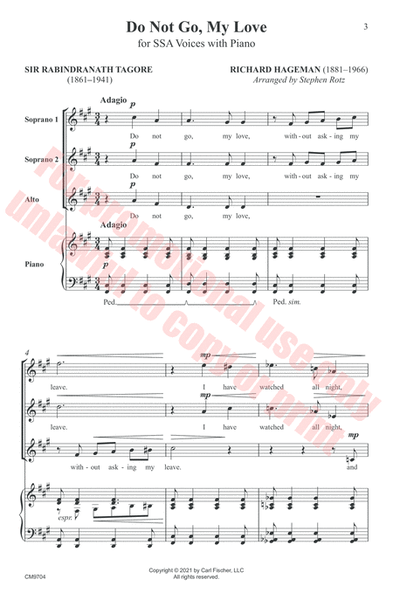
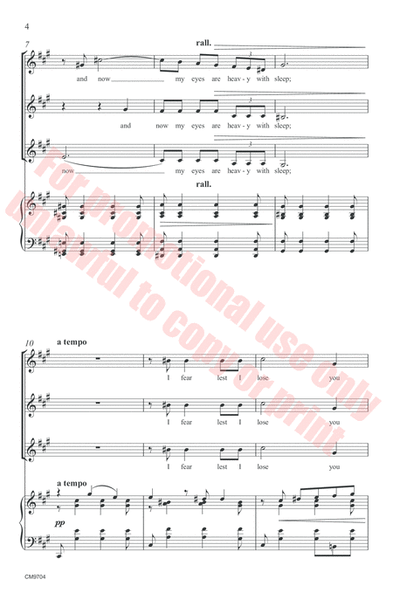
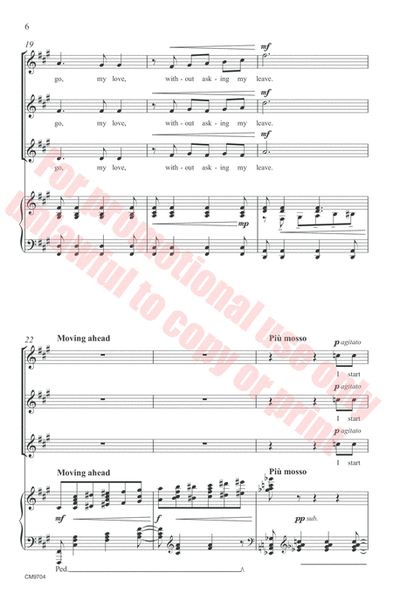
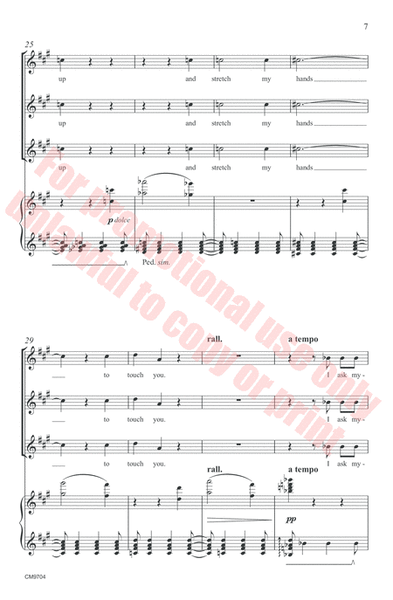
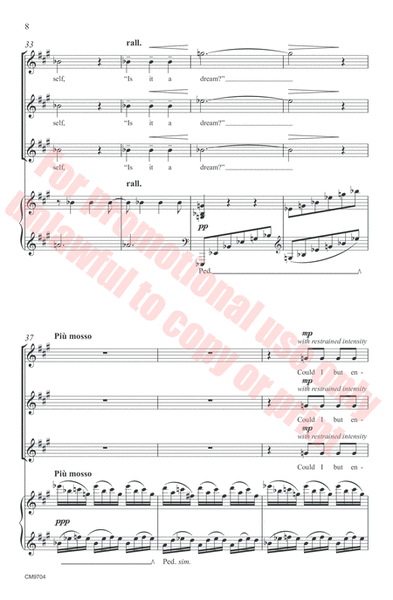
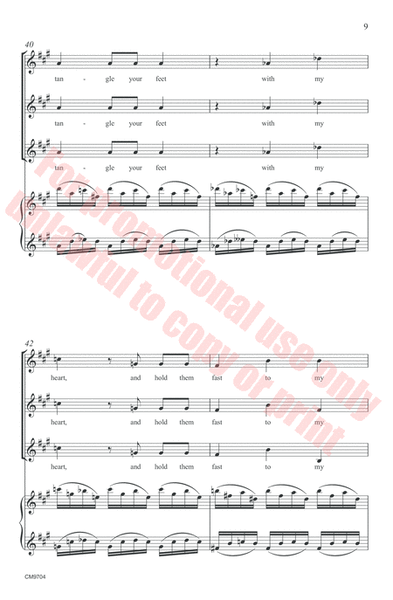
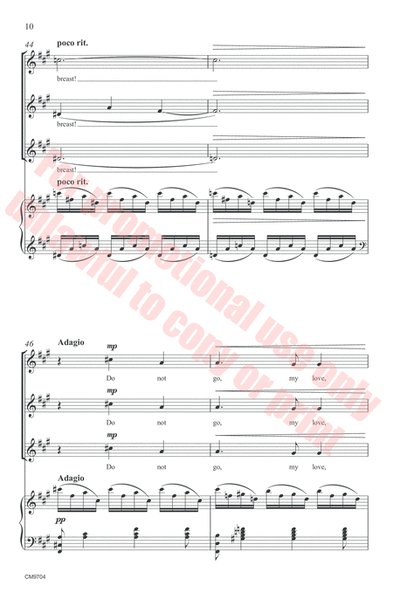
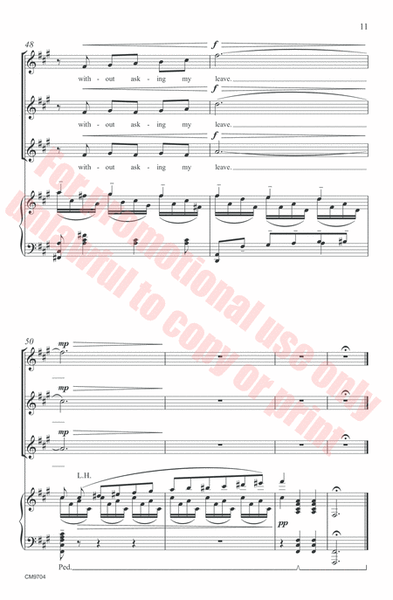
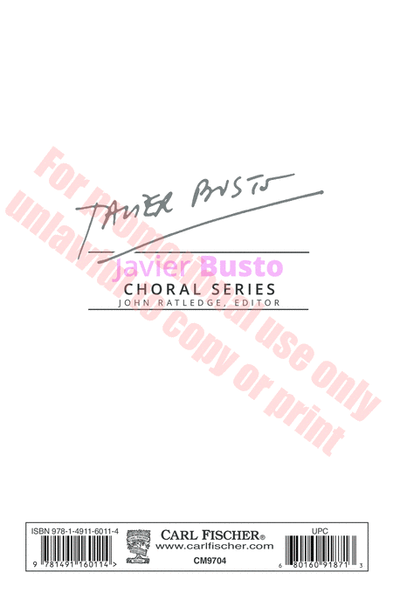
 Share
Share